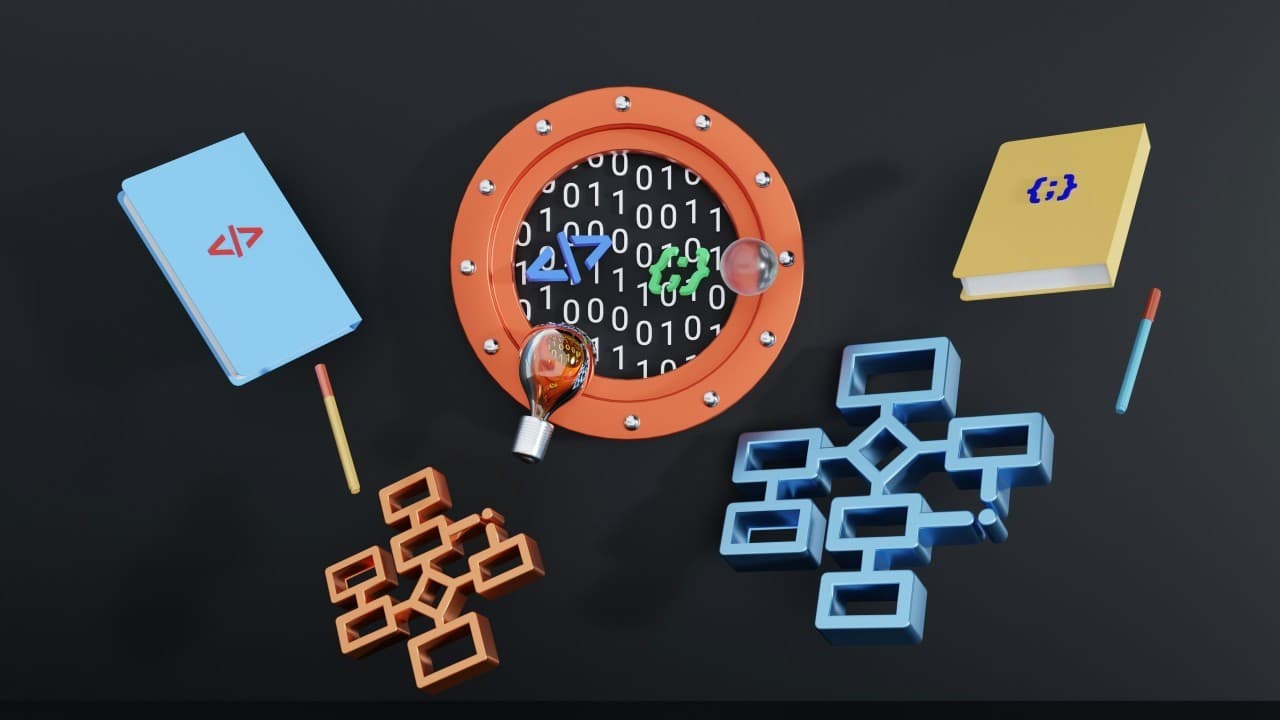
Why payers need it, and how Nedl Labs makes it real
Health-plan policies are long, constantly evolving, and full of clinical nuance. They dictate what care is covered, under what conditions, and how claims should be adjudicated. Payer Policies still live as static PDFs or HTML pages, scattered across payer sites and CMS portals.
For medical directors, Payment Integrity leaders, and policy teams, this creates a fundamental problem: How do you transform thousands of pages of unstructured policies from CMS, Competitors, and your evolving and updated systems into a structured living knowledge system that you can search, compare, analyze, and update - with complete lineage and clinical integrity?
At Nedl Labs, we call the solution to this problem policy intelligence.
The payer’s challenge: goals & objectives
Payer policies are competitive levers, compliance guardrails, and cost-control instruments simultaneously. Based on our work with payers and industry experts, we frame the core objectives of policy intelligence into four buckets:
Comparative competitive analysis
- Map your policy portfolio against CMS and peer plans.
- Identify missing policies, coverage differences, or outdated clauses.
- Track version drift over time: what changed, when, and why.
Addressable dollar opportunity [Payment Integrity]
- Tie policy gaps directly to claims and utilization data.
- Quantify potential savings from adopting missing policies or clauses.
- Flag CMS compliance risks before auditors do.
Optimal policy design & governance
- Generate draft policies or redlines with citations and effective dates.
- Route them through UM/PI committees for review and adoption.
- Promote validated post-pay findings into defensible pre-pay edits.
Operational excellence
- Reduce policy ingestion latency from weeks to hours.
- Improve clause and entity extraction accuracy, cutting manual effort.
- Deliver provider-ready evidence packets to reduce appeals and abrasion.
The payer’s north star is to stop leakage to drive affordability and maintain trust—with policies that are both clinically sound and operationally executable.
Why PDFs/HTML aren’t enough
The core issue is structural. Policies today are:
- Unstructured: PDFs and HTML pages with no consistent schema.
- Variable: Clinical terms, codes, and criteria differ across payers.
- Fragmented: Policies, contracts, and coding edits live in different silos.
- Dynamic: CMS alone issues dozens of NCD/LCD updates each quarter.
Relying on manual review means errors slip through, opportunities go unnoticed, and compliance gaps emerge. What’s needed is a systematic way to ingest, normalize, and govern policies on scale.
Field Lessons + Decades of Building & Shipping Experience
- Graph-grounded RAG is effective. Microsoft’s GraphRAG pattern demonstrates a clear advantage for complex, cross-document questions by creating a knowledge graph from text and using it to organize retrieval and summarization. That’s precisely the type of questions policy teams ask (“Does Policy A require prior auth for X under diagnosis Y?”).
- Document layout matters. Before any LLM work, you need a clean structure from messy PDFs. HURIDOCS’ open-source layout analysis converts PDFs to JSON with headings, tables, figures—hugely valuable for chunking and lineage.
- Hybrid NER beats any single model. Domain models like BioBERT are efficient and strong on known entity types; newer GLiNER-BioMed models add flexible, zero/few-shot recognition for novel entities; and rules/clinical toolkits like medspaCy catch the structured stuff and negations. We combine them.
- Policy → rules is doable (with humans in the loop). IBM’s open work on extracting actionable “policy tuples” and recent rule-extraction systems demonstrate that you can machine-lift clauses into checkable logic, allowing experts to validate.
- Postgres can power hybrid search. With pgvector plus a BM25 path, you can run vector and keyword search in one database; LlamaIndex ships a Postgres vector store with native hybrid support.
Nedl Labs’ technical architecture to policy intelligence
We designed our stack around one principle: Data → Facts → Graph → Action.
1. Ingestion & structuring
- Sources: Public payer policies, CMS NCDs/LCDs, internal uploads.
- Layout analysis: HURIDOCS models parse PDFs/HTML into machine-readable JSON, preserving headings, sections, tables, and lists.
- Hash & versioning: Every new or updated document is tracked with provenance.
2. Vocabulary normalization
- Clinical terms are mapped to UMLS concepts, ensuring “heart attack” = “myocardial infarction.”
- Abbreviations are expanded; synonyms are harmonized.
- This enables cross-payer comparison on a level playing field.
3. Information extraction
Named Entity Recognition (NER):
-
- BioBERT for high-precision recognition of ICD/CPT codes, drugs, and clinical entities.
-
- GLiNER-BioMed for flexible, zero/few-shot extraction of policy-specific entities like coverage criteria or provider types.
-
- medspaCy + rules for deterministic patterns: dates, dollar amounts, frequencies.
Clause extraction: Commercial LLMs (e.g., “o1-class”) lift clauses like “prior authorization” or “documentation requirements” into structured JSON.
Relation extraction: Linkage of entities and clauses into actionable tuples (procedure → requires prior auth → diagnosis set).
4. Indexing & hybrid retrieval
- Vector embeddings (pgvector): semantic similarity search.
- Keyword index (BM25): exact matches for codes, terms, and IDs.
- Metadata index: payer, dates, categories.
- LlamaIndex orchestrates hybrid retrieval, fusing results into a single ranked context.
5. Knowledge graph construction
- Entities (policies, clauses, codes) become nodes.
- Relationships (e.g., “requires prior auth,” “excludes”) become edges.
- This graph powers graph-enhanced retrieval: LLMs ground their answers in structured facts, reducing hallucinations.
6. Analytics, comparison & generation
- Search/Q&A: “Does Policy X Cover Y under Z?” → grounded answer with citations.
- Policy comparison: Detect missing/extra clauses across payers or versions; estimate savings.
- Draft policy generation: Asynchronous workflows generate Word drafts or redlined updates, linked to source evidence.
- Downstream integration: Outputs feed contract-policy drift alerts, DRG review packets, and leakage dashboards.
AI + HI (Human Intelligence)
AI alone cannot solve payment integrity. Policies sit at the intersection of clinical nuance, contractual rules, and regulatory oversight. Our approach is AI + HI:
- AI surfaces issues: missing policies, risky clauses, inconsistent criteria.
- Humans validate & govern: medical directors, policy analysts, and PI committees decide what to promote into production.
- Governed workflow: all outputs carry provenance (document, section, effective date) so they can withstand audit and appeal.
Benchmarking what “better” looks like
We measure ourselves not just by model accuracy, but by payer outcomes. Key Metric:
- Extraction F1: ≥ 90% (vs. ~75–80% industry baselines).
- Entity Linking Accuracy: ≥ 93% with UMLS normalization.
- Provenance Coverage: 100% of nodes carry citations.
- Ingestion latency: 2 days → hours.
- Appeals overturn reduction: −20–40% with evidence-ready packets.
- Validated savings: millions in addressable leakage per line of business.
Policy intelligence isn’t just about reading policies better. It’s about creating a feedback loop between: Policies (should we pay?), Contracts (how much do we pay?), and Claims (what did we pay?).
When these Policies, Contracts, and Claims align, payers reduce leakage, providers see fewer reversals, and patients experience less friction. When they drift, you get underpays, overpays, and appeals you shouldn’t lose.
The healthcare system cannot afford $100B+ in improper payments annually. Payment integrity isn’t a “nice-to-have”—it’s a trust problem. Policies are the blueprint of that trust.
https://www.linkedin.com/pulse/payment-integrity-trust-problem-just-financial-ashish-jaiman-emg2e
At Nedl Labs, we believe policy intelligence is the key to aligning clinical, contractual, and claims logic at scale. Architecting compound AI system - combining large/small language models, knowledge graphs, and human expertise, we are building the infrastructure that payers need to stop leakage, drive affordability, and deliver healthcare with confidence.
Share this article
About the author
Founder Nedl Labs | Building Intelligent Healthcare for Affordability & Trust | X-Microsoft, Product & Engineering Leadership | Generative & Responsible AI | Startup Founder Advisor | Published Author
Most Recent
Top Articles
Also See

From Recovery to Prevention: A Trust-First Blueprint for Payment Integrity

Enterprise Product Sense: Why Consumer Intuition Fails in B2B: What Works Instead

DRG Review After Payment

The Anatomy of Product Sense

Contract–Policy Drift: The Hidden Source of Leakage (and How to Fix It)








